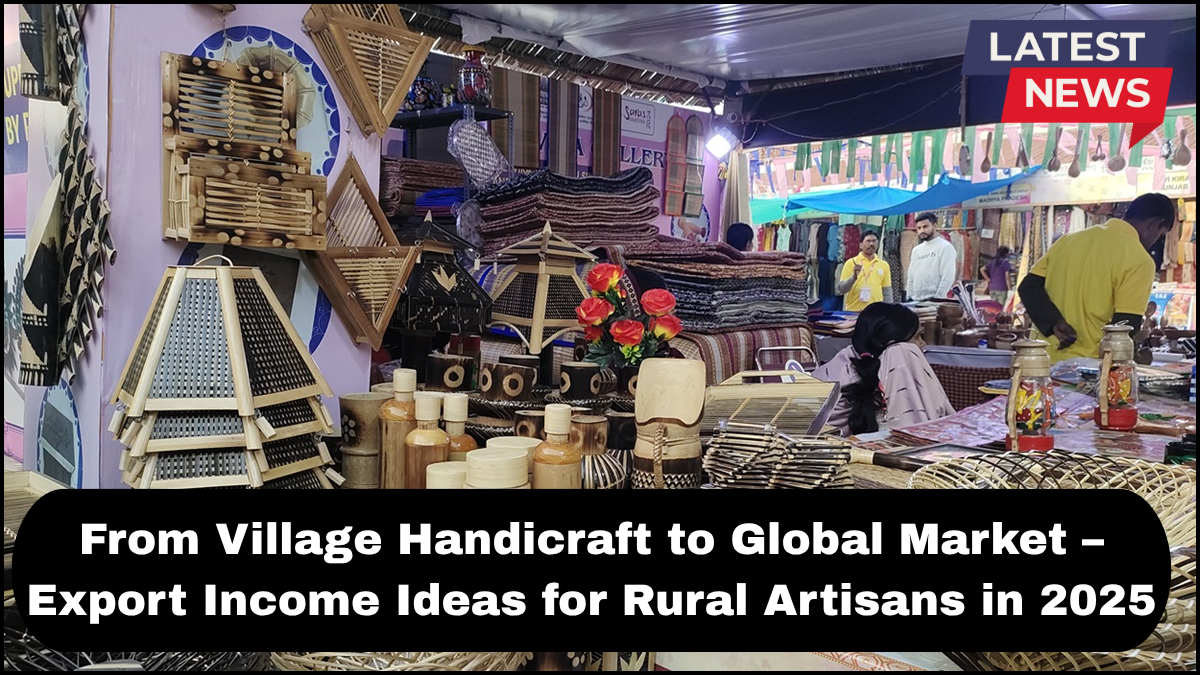In 2025, the global appetite for authentic, handmade products is growing stronger than ever. From eco-conscious consumers to luxury retailers, there’s a booming demand for village handicrafts that tell a story and preserve cultural identity. For rural artisans, this presents a unique opportunity to scale from local sales to international exports. But to succeed, they need strategic approaches, innovative platforms, and collaborative models. Here’s how the journey from village handicraft to export can unlock sustainable income for rural communities.

Understanding the Global Appeal of Handicrafts
Traditional crafts have intrinsic value: they are handmade, culturally rooted, and environmentally friendly. Consumers in developed markets are willing to pay a premium for such products, especially when they’re tied to ethical sourcing and social impact. Whether it’s handwoven textiles, terracotta pottery, bamboo crafts, or tribal jewelry, village artisans can tap into niche markets that value originality and craftsmanship.
Building a Cottage Industry Export Model
To move beyond seasonal sales and local fairs, artisans must adopt a Cottage Industry Export Model that integrates:
- Product Development: Refining designs to suit international tastes while preserving traditional elements.
- Quality Standards: Ensuring consistency in size, color, and durability to meet global expectations.
- Branding and Storytelling: Creating a strong narrative around the artisan, craft, and culture that adds emotional value.
- Export Readiness: Understanding documentation, packaging standards, pricing, and logistics for global trade.
Governments and NGOs can support this model through training, certifications, and grants aimed at improving export capacity.
Digital Platforms Bridging the Gap
In 2025, digital transformation is key to global exposure. Artisans can now list their products on international platforms like Etsy, Amazon Handmade, and Novica, or join craft-specific B2B marketplaces. Social media channels—particularly Instagram and Pinterest—also play a major role in reaching audiences who value aesthetic storytelling.
Additionally, partnerships with e-commerce facilitators or export aggregators can streamline the backend operations such as payment processing, compliance, and shipping.
Export Income Ideas for Rural Artisans
1. Curated Gift Boxes
Combining multiple products into themed gift boxes (e.g., “Rural India Wellness Kit” or “Tribal Festive Collection”) offers better margins and appeals to corporate buyers.
2. Limited Edition Series
Launching exclusive, seasonal collections helps create urgency and a sense of exclusivity. This can be tied to festivals or cultural events.
3. Custom Orders and Collaborations
Working directly with global designers, retailers, or interior decorators for bespoke product lines opens up high-value contracts.
4. Sustainable Packaging Solutions
Offering eco-friendly packaging can make a significant difference to overseas buyers looking for complete ethical value chains.
5. Story-Driven Product Lines
Products with backstories (e.g., the weaver’s journey, village traditions, or revival of dying crafts) resonate more with conscious consumers and can be priced higher.
Government Support and Policy Framework
In 2025, several policy incentives are in place to support rural handicraft exports:
- Export subsidies under MSME schemes
- Tax exemptions on handmade product categories
- Dedicated export zones for cottage industries
- Digital literacy and e-commerce training initiatives
State-level craft clusters and cooperative societies are also helping streamline supply chains and reduce production costs.
Overcoming Challenges
Despite the potential, rural artisans face challenges like lack of internet access, language barriers, and financial literacy. These can be mitigated by:
- Collaborating with local NGOs or SHGs (Self-Help Groups)
- Leveraging mobile-based learning tools
- Partnering with microfinance institutions for working capital
With the right mix of innovation, training, and market linkage, artisans can not only sustain but thrive in global trade.
FAQs
Q1: What is the first step for artisans looking to export village handicrafts?
A: Start by identifying the most exportable products and work with local trade bodies or export councils to understand compliance and logistics.
Q2: Are there government schemes that support handicraft exports?
A: Yes, schemes under MSME and Ministry of Textiles offer subsidies, training, and digital marketing support.
Q3: Which online platforms are best for rural artisans to sell globally?
A: Etsy, Amazon Handmade, Shopify, and platforms like IndiaMART and ExportersIndia are good starting points.
Q4: How can language and tech barriers be addressed?
A: Through training programs, mobile apps in regional languages, and collaborations with digital-savvy partners or NGOs.
Q5: What kinds of handicrafts are most in demand internationally?
A: Home decor items, eco-friendly lifestyle products, handmade textiles, jewelry, and wellness accessories have strong global demand.
click here to learn more